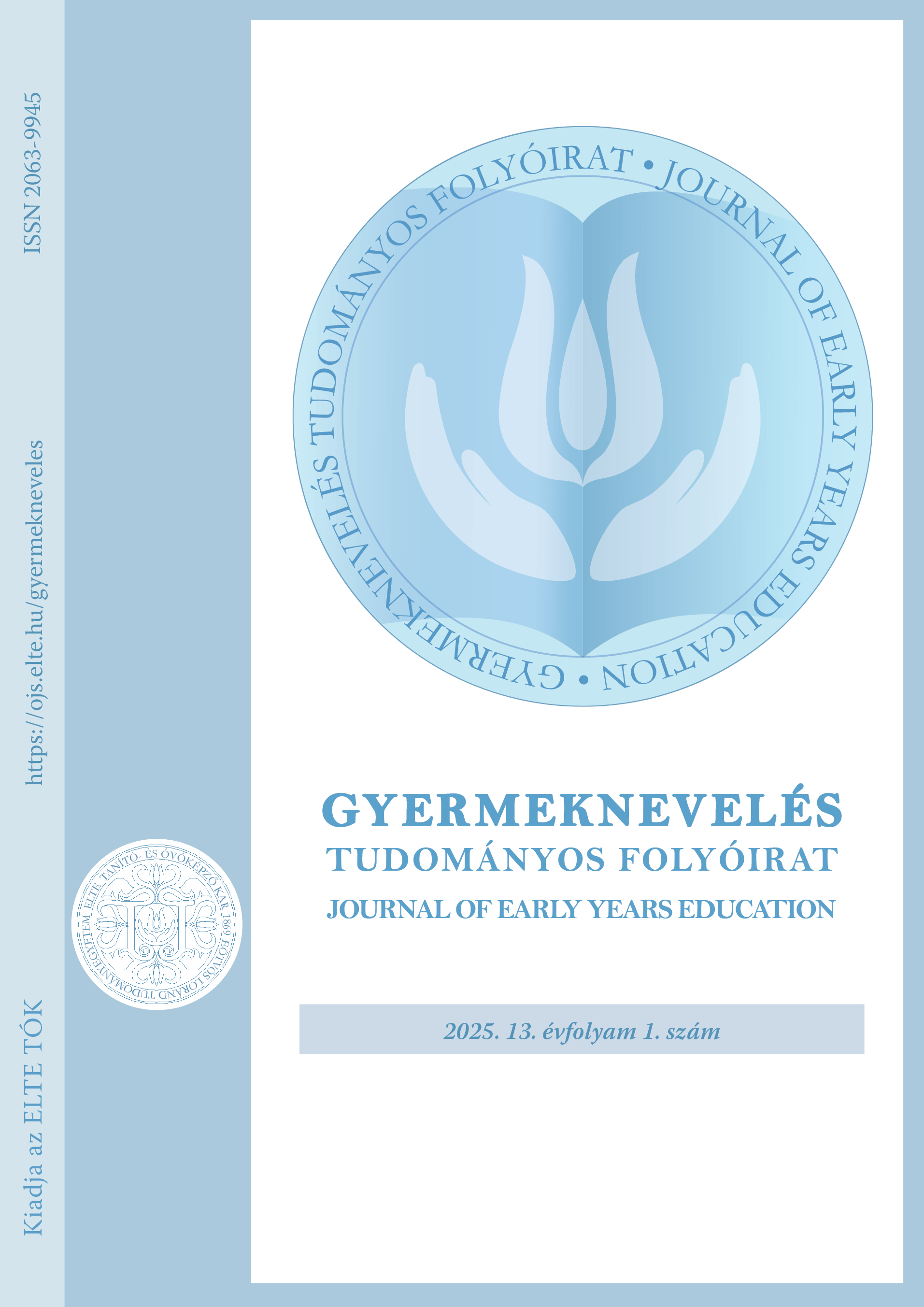Examination of the nutritional and lifestyle characteristics of primary school (lower grade) children
DOI:
https://doi.org/10.31074/gyntf.2025.1.53.69Keywords:
healthy lifestyle, physical activity, BMI, family role model, screen time, electronic device use habits, overweight and obesity, dietary habits, habit formationAbstract
The new National Curriculum abolished Environmental Studies in first and second grades from 2020 onwards. However, it is important that health education become part of educational work. The aim of our survey is to show that children whose parents exercise regularly have better health indicators and body mass index (BMI) than others. Between 2021 and 2023 we surveyed parents of third-grade pupils, using a questionnaire to assess the nutritional status and eating habits of the children, the demographic characteristic of parents, and their relevant habits. We wanted to find out how all these factors affected the nutritional status of the children, their health and the habits of physical activity they would later develop. Our study mainly examines trends and is not suitable for precise nutrient calculations. The results were also compared with those of the Second National Growth Survey (2nd NGS 2003-2006). The average height and weight of children are in line with values reported by 2nd NGS. The BMI is characterised by an increasing prevalence of overweight and obese children. Parents’ sporting habits have a significant positive effect on their child’s nutritional status. Family sporting activities have a positive effect on children’s nutritional status, affecting their health. In our survey allergy/sensitivity to food ingredients is in line with national rates. The number of meals per day and breakfast and lunch habit is optimal for the majority of respondents. Typical foods tend to be carbohydrate- and fat-rich, with little vegetable content. Fluid intake, mainly water, is close to adequate. Public education could be an excellent platform for shaping good eating habits; hitherto, this has been largely provided by environmental education.
Downloads
References
/2012. (VI. 4.) Korm. rendelet A Nemzeti alaptanterv kiadásáról, bevezetéséről és alkalmazásáról. Magyar Közlöny, 2012/66. (2012. június 4.), 10635–10847.
/2016. (XII. 28.) Korm. határozat az „Egészséges Magyarország 2014–2020” Egészségügyi Ágazati Stratégia 2017–2018 évekre vonatkozó cselekvési tervéről
/2014. (IV. 30.) EMMI rendelet a közétkeztetésre vonatkozó táplálkozás-egészségügyi előírásokról
/2020. (I. 31.) Korm. rendelete a Nemzeti alaptanterv kiadásáról, bevezetéséről és alkalmazásáról szóló 110/2012. (VI. 4.) Korm. rendelet módosításáról. Magyar Közlöny, 2020/17. (2020. január 31.), 290–446.
Bodzsár, É. (2006). Humánbiológia. Fejlődés: növekedés és érés. ELTE Eötvös kiadó.
Bodzsár, É. B. & Zsákai, A. (2012). Magyar gyermekek és serdülők testfejlettségi állapota. Országos Növekedésvizsgálat 2003–2006. Body developmental status of Hungarian children and adolescents. Hungarian National Growth Study 2003–2006. Plantin Kiadó. http://ludens.elte.hu/~anthrop/onv.html
Dudley, D.A., Cotton, W.G. & Peralta, L.R. (2015): Teaching approaches and strategies that promote healthy eating in primary school children: a systematic review and meta-analysis. International Journal of Behavioral Nutrition and Physical Activity. 12, 28. https://doi:org/10.1186/s12966-015-0182-8
EFSA (2004). Opinion of the Scientific Panel on Dietetic Products. Nutrition and Allergies on a request from the Commission relating to the evaluation of allergenic foods for labelling purposes. The EFSA Journal, 32(2004), 1-197. https://doi.org/10.2903/j.efsa.2004.32
ELEF (2019). 2019. évi Európai lakossági egészségfelmérés. Egészségi állapot, betegségek, 2019. https://www.ksh.hu/docs/hun/xftp/idoszaki/elef/egeszsegi_allapot_2019/index.html (2023.09. 02.)
Hajtman, B. (1971). Bevezetés a matematikai statisztikába, pszichológusok számára. Akadémiai kiadó.
Messina, M., Venter, C. (2020). Recent surveys on food allergy prevalence. Nutrition Today, 55(1), 22–29. 1/2 2020. https://doi.org/10.1097/NT.0000000000000389
Sallai, Á. (2001). Gyermekkori obesitas. Hippocrates, III/5.
Soós, I. (2022). Az egészségközpontú fizikai aktivitás és az ülő („sedens”) életvitel. Magyar Testnevelési és Sporttudományi Egyetem, Budapest. https://doi.org/10.21862/soos.sedens.0722
Szmodis, M., Bosnyák, E., Cselik, B., Protzner, A., Trájer, E., Ács, P. & Tóth, M. (2014). Ifjúság – egészség – sport. Magyar Sporttudományi Társaság.
WHO (1995). Physical Status: The use and interpretation of anthropometry: Report of a WHO Expert Committe. Technical Report Series 854, WHO, Geneva. http://apps.who.int/iris/bitstream/10665/37003/1/WHO_TRS_854.pdf
Downloads
Published
How to Cite
Issue
Section
License
Copyright (c) 2025 Author

This work is licensed under a Creative Commons Attribution-NonCommercial-ShareAlike 4.0 International License.

